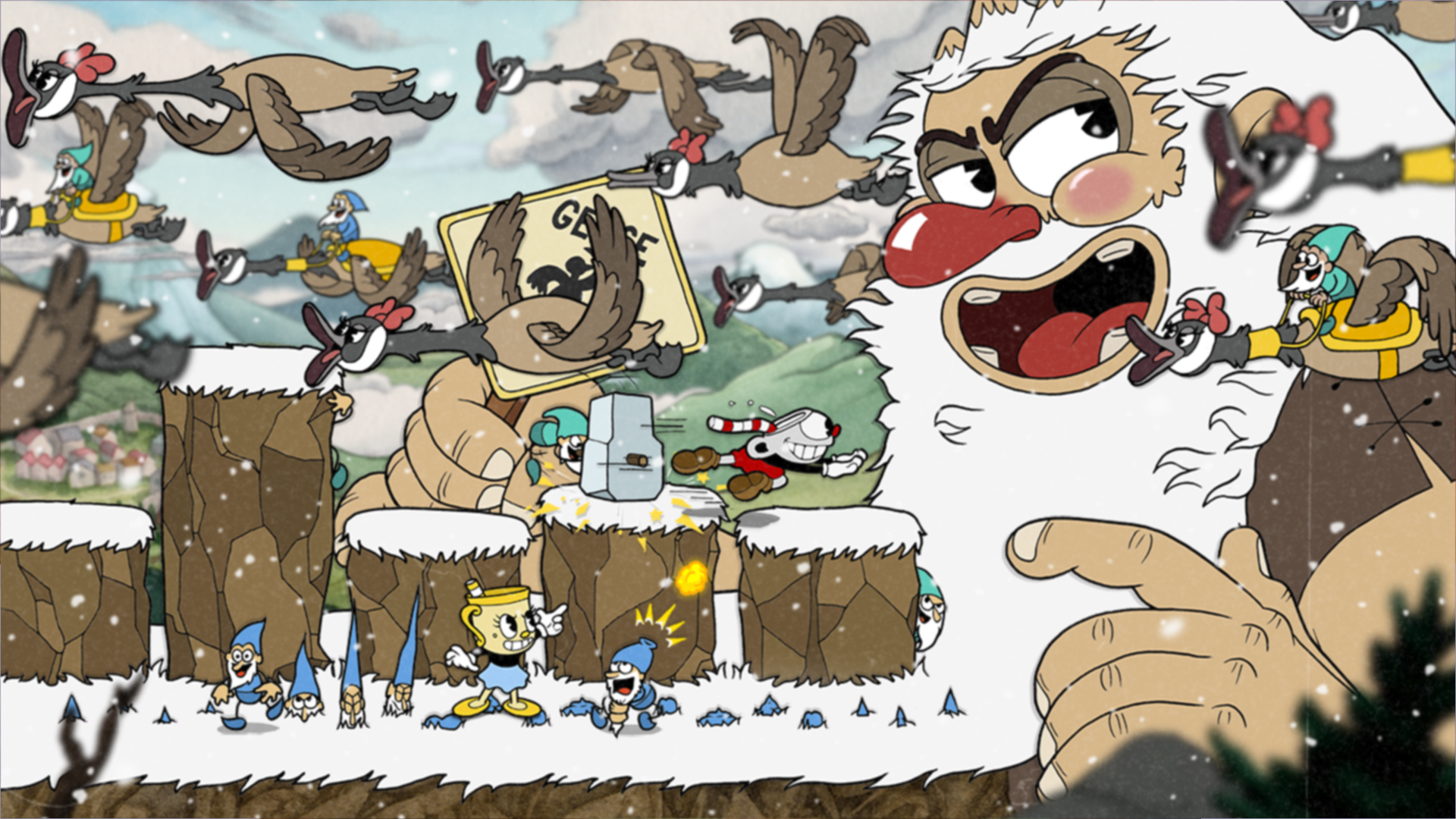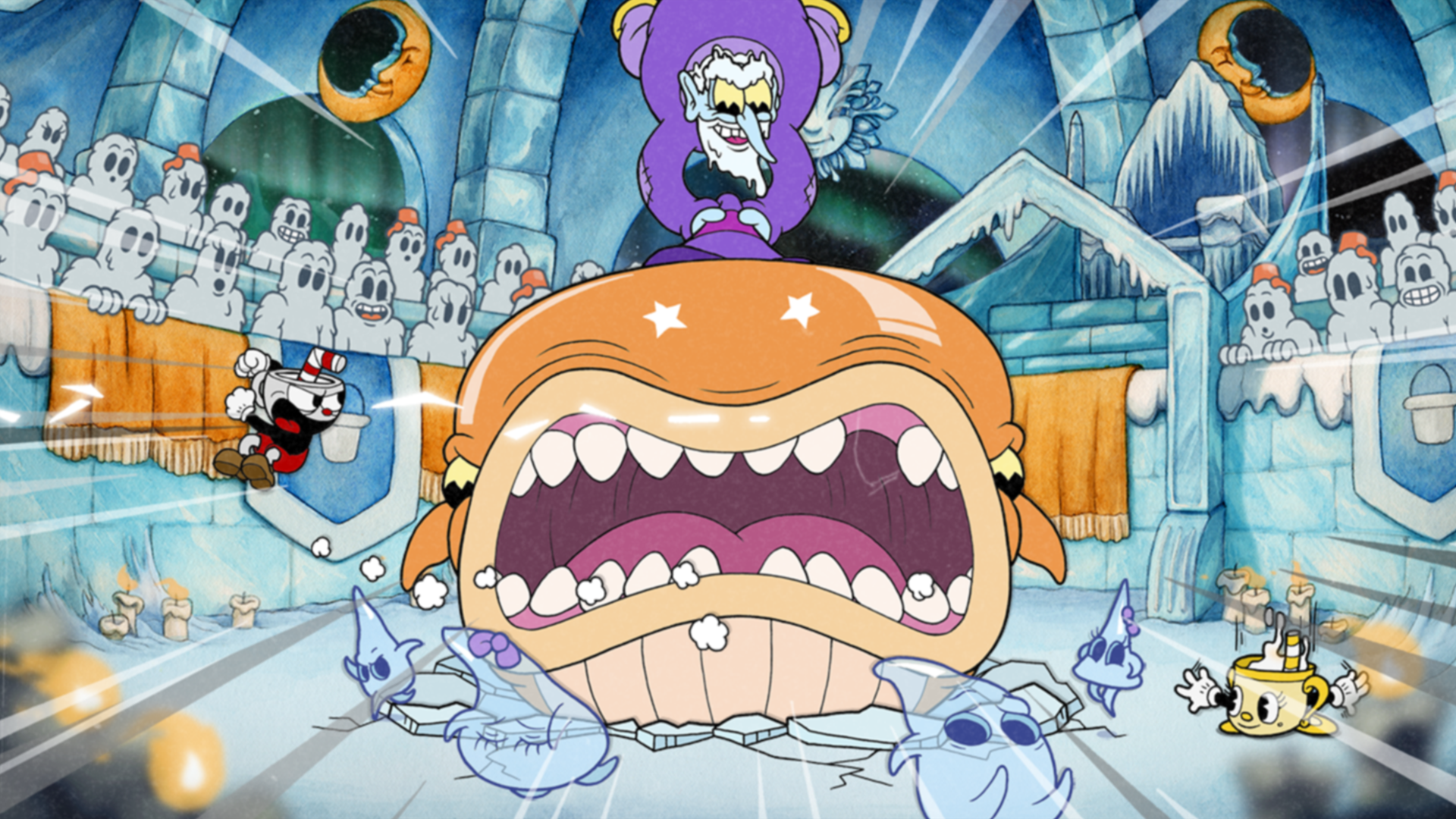Much of that time has, presumably, been spent on the visuals. As with the main game, it’s all hand drawn and animated to mimic the cartoons of the 1930s. The difference with the DLC is the sheer amount of detail. There are more frames of animation in one phase of a boss here than in an entire boss-fight in the original, I was told in a preview of the game. And that really shows. Each boss is even more of an elaborate set piece. Backgrounds are richly detailed and layered to offer a far greater sense of depth. Some boss-fights take place across multiple levels, while others literally flip the screen. And the characters themselves twist and morph into some of the wackiest designs in the entire game: across one boss-fight (shown in previews) a wizard transforms into a yeti, a fridge and a giant snowflake. This is Studio MDHR simply showing off.
The sheer amount of stuff on screen, though, does impact the difficulty. There are more characters and projectiles rushing around than ever, while for some boss-fights the background is so elaborate it’s like you’re battling in front of a separate animation film. Impressive, yes, but I did find it a little distracting. The Delicious Last Course is not for the faint hearted, then - it’s accessible as soon as you’ve completed one of the main game’s Mausoleum levels, but I’d recommend playing through a fair chunk of it to familiarise yourself with the basics and collect some much-needed coins. Those coins can be spent on brand new weapons and abilities, bought once more from Porkrind’s Emporium. Selecting the right weapon for the boss can make a huge amount of difference: the three-way sparks of Converge are particularly handy for spreading across the screen, while the homing missiles of the Crackshot allow you to focus on dodging over aiming. Without run-and-gun levels, coins are now collected through a series of side battles that act more like puzzles than anything. But the real substance of the DLC is found in the new boss battles: enough to offer an evening of entertainment, skill-level depending. I won’t spoil any of them here, but they’re among the trickiest, funniest, and most satisfying of the Cuphead experience. Plus, there are multiple difficulties and secrets to uncover in the world map too, adding depth to this final course. Then there’s the not-so-secret ingredient: Ms. Chalice. She’s the centrepiece of the DLC, with the story focused on defeating bosses to collect ingredients required to make a special tart that will turn her ghost into corporeal form. Playing as Chalice offers an alternative style that has advantages but is by no means easier. Chalice can double-jump, parries by dashing, and has a dodge-roll that makes her invincible. She’s also allowed an extra hit point. Boss attacks seem almost designed to show off these new moves, although it’s entirely possible to beat them as Cuphead too. Above all, her dodge-roll is invaluable, but I found it a little fiddly to execute in the heat of battle and, sadly, Chalice’s moveset cannot be reconfigured on a controller where Cuphead’s can. What’s more, a cookie charm is equipped to play as Chalice, which locks you out of other charms that could prove useful to you, so it’s a bit of a risk. Still, playing the original game using her moveset is a welcome addition for anyone seeking a twist. For the most part, though, The Delicious Last Course is more of the same. More of the sumptuous visuals and wonderful jazz score. More of the high difficulty, with bosses taunting you every time you lose. More of that succulent satisfaction when you finally hit the knockout.

